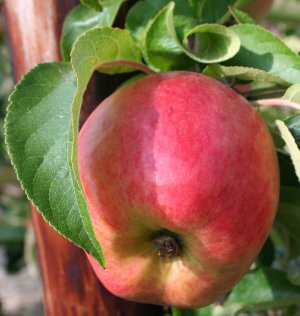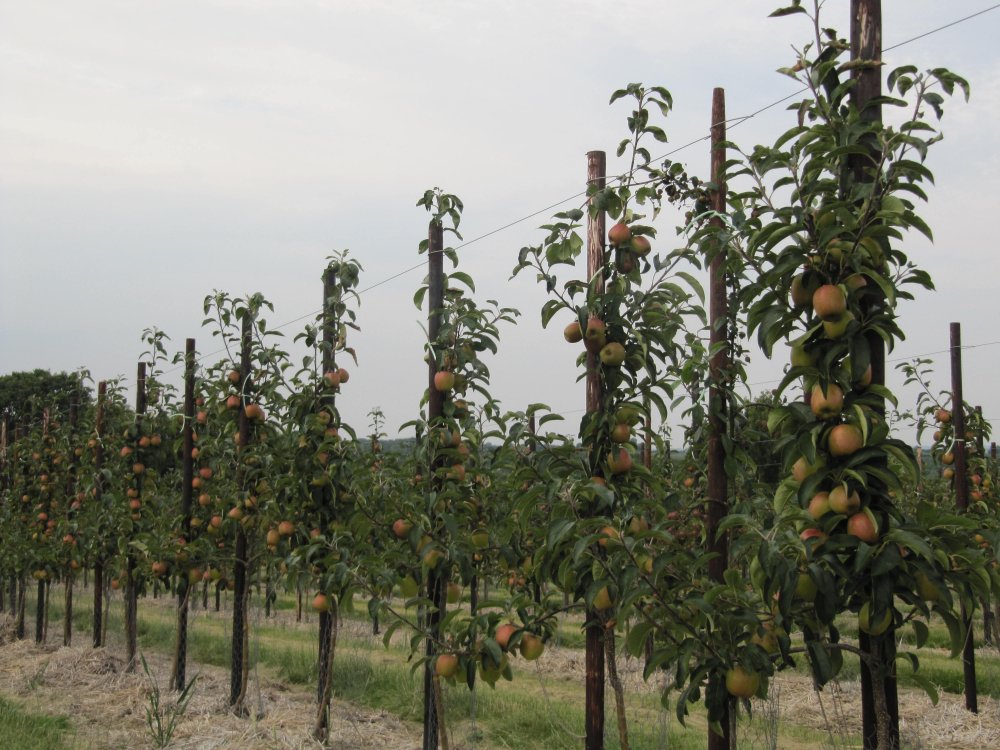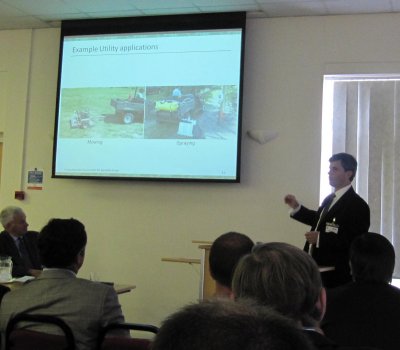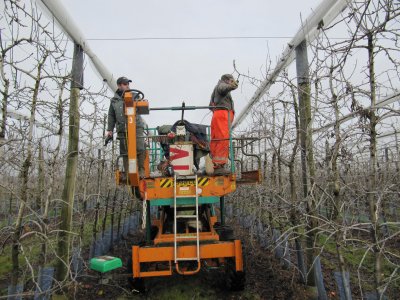

![]() A mixed weather pattern this week, hot and humid Mon - Wed, heavy rain in most places on Thursday and cool and fresh on Friday.
A mixed weather pattern this week, hot and humid Mon - Wed, heavy rain in most places on Thursday and cool and fresh on Friday.
 The English Apple Man has been 'out and about' in a number of orchards; on Tuesday afternoon, along with a group of interested growers, we made visits to two farms in West Kent. Park Farm at Frittenden and Cryals at Matfield who have invested heavily in the new variety ZARI which is a cross between Delbard Estivale and Elstar and bred in Belgium.
The English Apple Man has been 'out and about' in a number of orchards; on Tuesday afternoon, along with a group of interested growers, we made visits to two farms in West Kent. Park Farm at Frittenden and Cryals at Matfield who have invested heavily in the new variety ZARI which is a cross between Delbard Estivale and Elstar and bred in Belgium.
ZARI is licensed in the UK to A. C. Goatham & Son and currently exclusive to Morrisons Supermarket.
The Zari we saw was about two weeks away from harvest and red colour has still to fully develop, however the single fruit in the picture on the right is indicative of what the ripe fruit will look like.
In the picture below, a young orchard, only in its second year in the ground, already carries a very good crop and demonstrates the even cropping possible with this variety. The EAM will be re-visiting these orchards just before harvest and give a much broader overview of the potential of ZARI in two weeks time!

Automation in the orchard!
Following on from last week's overview of The Automation Conference at East Malling Research, this week I will review Autonomous Utility Vehicles in Orchards, the subject of Ben Grocholsky.
Ben leads the Information Management and Decision Making System area as a Project Scientist at Carnegie Mellon University Robotics Institute. He has been working to develop a multi-sensor unit that can collect, process, and represent large, complex data sets in a manner that supports rapid awareness, interpretation, and action. The data reveals environmental and canopy conditions.
In seeking to improve orchard efficiency with autonomous utility vehicles, robotics teams have designed a self-propelled and self-guided utility vehicle which can perform a number of tasks in the orchard - allowing workers to perform more skilled tasks such as picking/pruning etc. It has a number of applications and is being developed to work with other row crops inc. vines and other top fruit. 
Since its founding in 1979, the Robotics Institute has been leading the world in integrating robotic technologies into everyday life. While self steering orchard platforms are increasingly used in intensive European orchards, particularly in the Italian Tyrol, Ben gave the audience a fascinating insight into the ongoing development process.
Reflecting on his past experience in automation development, Ben illustrated how much of his knowledge came from working on US military automated equipment, including 'drones' now used extensively in areas like Afghanistan and robots capable of decommissioning Nuclear installations. Another example of 'automotive/automation' was the development of a car capable of travelling for 6 hours on public roads, unmanned and controlled entirely by robotics.
With this expertise Ben and his colleagues are well positioned to develop labour saving 'automated' machinery for the fruit industry. But how can robotics help?
The focus at this moment in time is very much on mobility; automated harvesting is currently too big a challenge. However with the increasing intensification of orchards; from the 1950's to the 1970's when traditional wide planted trees grew large and tall and required many skilled workers for harvest, to the gradual change in the 1980's with more intensive plantings of smaller trees, and the rapidly increasing intensification in the 1990's designed to increase early production and make labour inputs more efficient, orchard intensification appears to have now reached a climax (for now!) with hedgerow systems where trees are closely planted; 1 metre apart is common and many orchards are even more closely planted, creating a 4 metre high 'fruit wall' where mechanical pruning is already being used on the more progressive farms in many parts of the world.
Ben identified three main themes for development; 'crop intelligence' - 'automation' and 'technical adoption' all enable greater mobility augmenting operations. A family of re-configurable machines are now becoming integral to modern orchard operations. Ben showed a film of a fully automated self propelled unit methodically working its way through a large orchard spraying and mowing in one pass and without an operator in sight; spraying and mowing as one operation is standard procedure on most farms, BUT with an operator. The machine relied on a GPS (global positioning system) following precisely a 'map' of the orchard environment created in the 'system memory'
 The development of self driven orchard platforms capable of maximising the dexterity of the human hand can be seen as large units with a number of operatives or as a smaller 'one man' unit for smaller farms.
The development of self driven orchard platforms capable of maximising the dexterity of the human hand can be seen as large units with a number of operatives or as a smaller 'one man' unit for smaller farms.
These platforms allow workers to make full use of their skills for detailed tasks; pruning, tree tying, thinning and harvesting can all be carried out with less labour required and much less expensively than historic, labour intensive systems.
The Augmented Harvest System uses vacuum transfer of individual apples from the point of release by the pickers hand, directly and gently into the harvest container (bulk bin)
Time will see inevitable increases in the development stages of automation, Ben states confidently that full automation of harvesting is a 'solvable problem' with robots equaling the dexterity of humans. But, it will take time!
When asked if we will have to grow our trees to accommodate automation?
Ben agreed and moreover it is highly likely gene technology may be used to make the apple more conducive to automated harvesting!
Next week, more on automation technology and news of the next varieties ready for harvest.
Take care
The English Apple Man